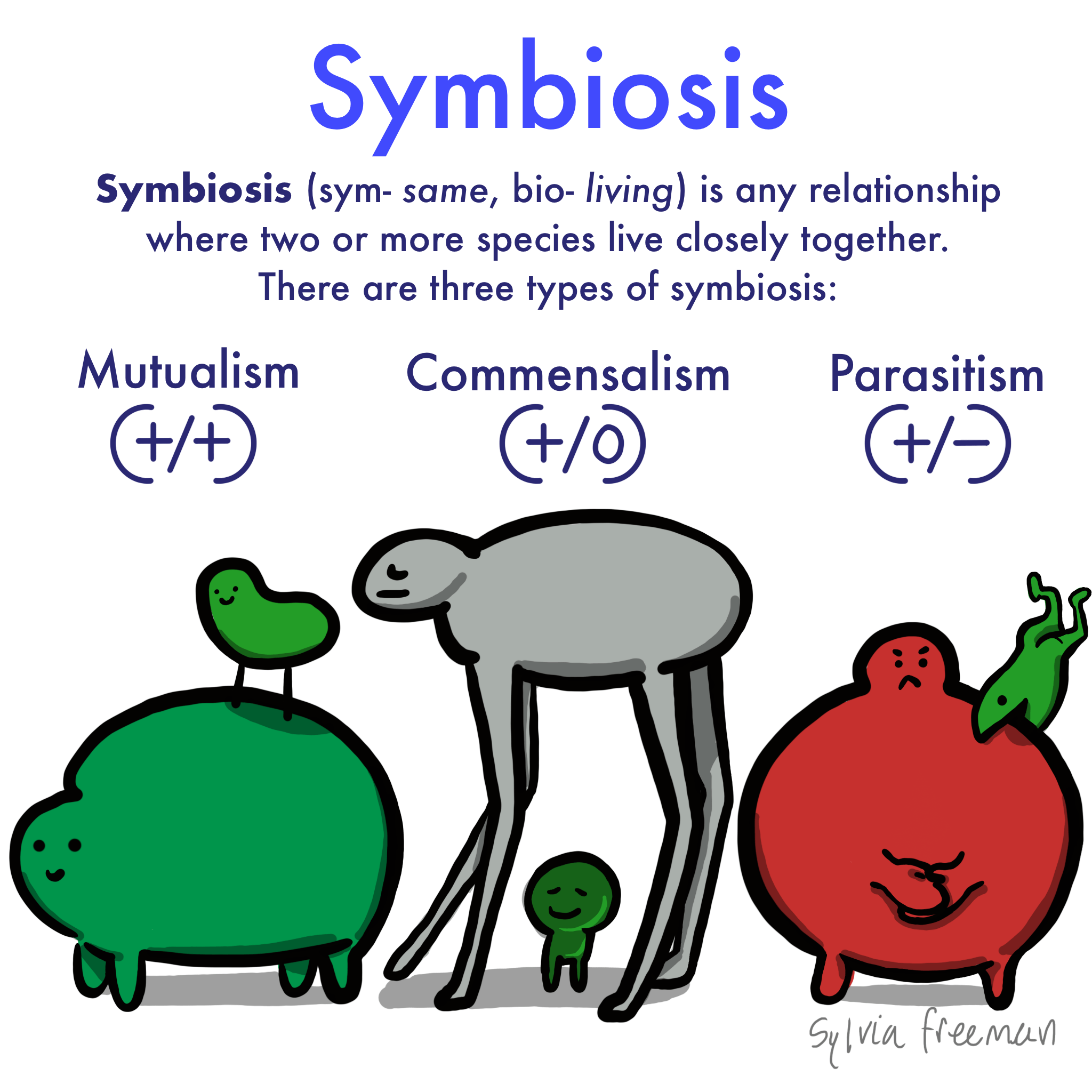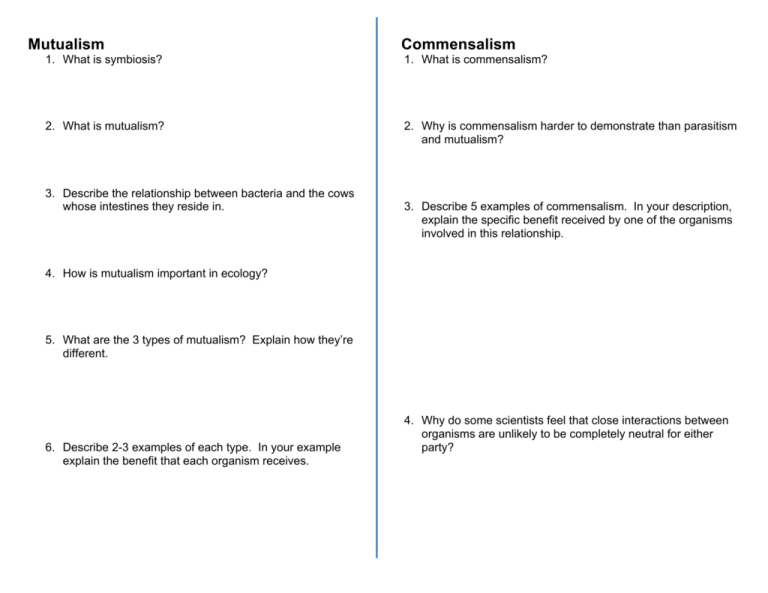Explain How Parasitism Differs From Mutualism
Parasitism and commensalism both benefit one organism but in parasitism the second organism is affected while in commensalism it is not. - one is harmed.
Difference Between Mutualism And Parasitism Pediaa Com
Commensalism Mutualism and Parasitism.
. The categories are mutualism parasitism and commensalism. Parasitism is when an organism lives as a parasite on another parasite. On the other hand commensalism represents that type of symbiotic relationship where only one organism get benefits while the other does not benefit and not harmed from the relationship.
Symbiosis describes several types of living arrangements between different species of organisms in an ecosystem. It is the interaction between two or more entities wherein both the entities can benefit from the interaction. So to review mutualism is where both organisms benefit commensalism is where one benefits and the other is unaffected and parasitism is.
Disease is when the infection begins to damage the host cells. Parasitism- a type of symbiotic relationship between 2 different organisms where one organism the parasite benefits at the expense of the host. Infection and a disease.
The relationship of the organisms plays a major role in the difference between mutualism commensalism and parasitism. Parasites live in or on another organism which is called the host. - the infection is when the parasite grows in your body.
Symbiosis is an interspecific relationship among population interactions. A cartoon picture of symbiosis. In commensalism the commensal needs the host but the host doesnt need the commensal.
Parasitism is the relationship where only one organism receive benefits while the other is harmed in return. Thus in commensalism we have one positive and one neutral result while in parasitism we have one positive and one negative result. One example of mutualism is when a bee and a flower interact.
The various species found within a single ecosystem can relate to each other in a variety of ways. Explain how an allele is. Explain Symbiosis Mutualism and Parasitism.
Examples of parasitism are Phronima and Salps a type of zooplanyton. The one that benefits from the other organism is called a parasite while the organism that is being harmed is called a host. Parasitism is the interaction between two species where only one benefits from the other organism and the other is harmed in return.
In Parasitism two different species interact and the parasite receives benefits at the expense of the host. Mutualism is the mutual beneficial relationship between individuals of two different. Mutualism is the relationship where both the organisms of distinct species are benefitted.
In this one or both species are benefitted and neither species is harmed. These relationships can be beneficial neutral or harmful to one or both organisms which are called symbionts. Explain how parasitism differs from commensalism.
Define mutualism parasitism and commensalism and give examples of each. Mutualism -a symbiotic relationship in which both organisms benefit. Parasitism and mutualism Organisms depend on other species for resources such as nutrients.
Explain how parasitism differs from mutualism and what the distinction is between an. Commensalism is a positive interaction. In the complex web of nature species often have several symbiotic relationship.
Commensalism -a symbiotic relationship in which one organism benefits and. Parasitism is an interaction in which one of those species would benefit at the expense of the host organism. Mutualism is where both organisms benefit commensalism is where one benefits but the other organism isnt harmed and lastly parasitism is where one organism benefits and the other is harmed.
The terms mutualism commensalism parasitism and symbiosis all refer to. Mutualism is when both species benefit in the relationship. In case of mutualism both the organisms are interdependent.
Mutualism is a positive interaction. Answer 1 of 4. Symbiosis is a relationship between two different organisms.
Parasitism -a symbiotic relationship in which one organism benefits and the other is harmed. Mutualism is when two organisms benefit from a relationship. Though it is an interspecific interaction cooperation term is used to explain their mutually beneficial interaction between the individuals of the same species which often includes social interactions.
Parasitism is a negative interaction. Mutualism is that type of a symbiotic relationship where both species involved get benefit from the relationship. Commensalism is when one organism benefits whereas the other one is not harmed.
Commensalism is the relationship where one organism of the two different species gains benefits while other is unaffected. In mutualism both organisms benefit. In mutualism both organisms need each other.


No comments for "Explain How Parasitism Differs From Mutualism"
Post a Comment